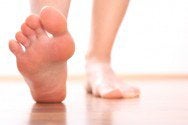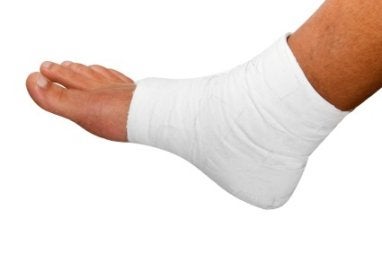-
Manchester Campaign raises awareness in Elderly Fall Prevention
 The ‘Stay Strong, Stay Steady’ Manchester campaign set off in October to raise awareness in both the young and the old of actions that can prevent falls in the elderly. A third of people aged 65 and older are affected by falls, and they are the largest cause of accidental death for older people. Dr. Emma Stanmore from the University of Manchester shared, “With some simple methods such as helping more older people to undertake regular strength and balance exercises, safety checking their homes, or getting an eyesight and medication check, over a million falls could be prevented each year.”
The ‘Stay Strong, Stay Steady’ Manchester campaign set off in October to raise awareness in both the young and the old of actions that can prevent falls in the elderly. A third of people aged 65 and older are affected by falls, and they are the largest cause of accidental death for older people. Dr. Emma Stanmore from the University of Manchester shared, “With some simple methods such as helping more older people to undertake regular strength and balance exercises, safety checking their homes, or getting an eyesight and medication check, over a million falls could be prevented each year.” Proper foot care is something many older adults forget to consider. For more information, consult with Dr. Jon M. Sherman of Kentlands Foot and Ankle Center . Our doctor will assist you with all of your podiatric concerns.
The Elderly and their Feet
As we age we start to notice many changes in our body, but the elder population may not notice them right away. Medical conditions may prevent the elderly to take notice of their foot health right away. Poor vision is a lead contributor to not taking action for the elderly.
Common Conditions
Neuropathy – can reduce feeling in the feet, and can hide many life threating medical conditions.
Reduced flexibility – prevents the ability of proper toenail trimming, and foot cleaning. If left untreated, it may lead to further medical issues.
Foot sores – amongst the older population can be serious before they are discovered. Some of the problematic conditions they may face are:
Gouging toenails affecting nearby toe
Shoes that don’t fit properly
Pressure sores
Loss of circulation in legs & feet
Edema & swelling of feet and ankles
Susceptible Infections
Diabetes and poor circulation can cause general loss of sensitivity over the years, turning a simple cut into a serious issue.
If you have any questions please feel free to contact our office located in Gaithersburg, MD . We offer the newest diagnostic tools and technology to treat your foot and ankle needs.
Read more about Elderly and Feet
-
Elderly and their Feet
While proper foot care is important for everybody, senior citizens have the tendency to be more susceptible to certain conditions and should therefore be well informed about problems that may arise and what they can do to properly avoid or treat them.
Some of the most common problems are foot ulcers, ingrown toenails, fallen arches, and fungal infection. A foot ulcer is an open sore on the foot and can be a result of decreased sensation in the feet. An ingrown toenail is defined as when the nail grows into the side of the toe. Fallen arches are indicated by the instep of the foot collapsing. A fungal infection is a condition that results in deformed and discolored toenails.
In order to avoid these conditions it is recommended that the feet be inspected on a regular basis. If these inspections are carried out routinely, there is a good likelihood that problems can be identified before they become severe, or can even be avoided altogether. If any abnormality is discovered, it is important that you consult a doctor for diagnosis and information on treatment options.
Proper foot hygiene is also important. Making sure that you always have clean, dry socks on can be a major deterrent to many different problems including bacterial infections, foot odor, and certain types of fungus. Wet feet are a major cause of many of these problems. If your socks get wet, it is important to change them. Walking around in wet socks may not only lead to various infections, but can irritate the skin and result in a number of various complications. Clean, dry feet are less likely to be affected by fungal and other infections. If you can keep the skin on your feet healthy, this will substantially reduce the number of foot problems you will encounter in old age.
Proper footwear is another way to keep feet healthy. Shoes that fit well and provide proper support help prevent ingrown toenails and fallen arches.
Certain medical conditions such as diabetes or poor blood circulation increase the risk for foot issues. For individuals with any of these conditions it is extremely important to conduct regular foot inspections to make sure that there are no sores or infections present.
-
Nerve Disorders of the Foot and Ankle
Similar to well known nerve disorders in the hands, such as carpal tunnel syndrome, nerve disorders that affect the foot and ankle occur in patients for reasons ranging from stress to genetics. Nerve disorders of the foot should be addressed right away because they may be immobilizing in serious cases. Two of the most common nerve disorders of the foot and ankle are Interdigital Neuroma and Tarsal Tunnel Syndrome.
Interdigital Neuroma is caused by localized inflammation of one of the nerves that controls toe sensitivity in the frontal area of the foot. This inflammation is generally only found in the second or third interspace, and any other symptoms similar to Neuroma on other digits should be checked against other disorders. Symptoms include chronic burning or tingling sensations between the affected toes which can, at times, migrate to the toes themselves. This pain is often increased by walking, running, or by wearing shoes that compress the toes, such as high heels. A doctor should be consulted if this pain is chronic and if the symptoms get worse.
Typical examinations to determine the presence of Neuroma include radiographs, MRIs, and even bone scans of the affected area. Bone scans are only required if degeneration of bone is suspected, however. Surgery is often not required to alleviate the symptoms of Neuroma, and in many cases functional orthotics can be used to alleviate the stress of constant weight on the affected toes. Surgery is recommended for those patients that suffer from symptoms for 6 months or more, so reporting symptoms early can increase the rate of non-surgical recovery.
Tarsal Tunnel Syndrome, a condition that is less common than Interdigital Neuroma, is similar to Carpal Tunnel Syndrome in that it is caused by a compression of the nerve caused by any number of factors (mostly associated with excess pronation). Typically seen in those that have either flatfeet or valgus heel positions, Tarsal Tunnel Syndrome has patients complaining of moderate to severe ankle pain that starts along the bottom of the foot and often proceeds to the calf. Some more extreme cases occur with partial numbness and even atrophy of the foot and surrounding muscles.
If there is a good chance that someone has Tarsal Tunnel Syndrome, an EMG test is often used to diagnose the condition. If the diagnosis is positive, an MRI can be used to identify the compression of the nerve. Treatment with NSAIDS, functional orthotics, and rest off of the feet is often prescribed, but again, long standing symptoms require surgery, as do exacerbated symptoms caused by lesions present between nerves.
-
Research Allows a Greater Understanding of Peripheral Neuropathy
 New research will create greater understanding of the underlying molecular mechanisms of peripheral neuropathy and hopefully lead to new treatments, Medical News Today reports. The new discovery involves the activity of the brain’s anterior cingulate cortex (ACC), thought to be the area often involved in pain processing. In peripheral neuropathy, the damaged nerve fibers have a heightened response to normal singers and send incorrect messages to pain centers in the brain. In diabetic neuropathy, one of the most common forms of peripheral neuropathy, pain often begins in the feet before moving up the legs.
New research will create greater understanding of the underlying molecular mechanisms of peripheral neuropathy and hopefully lead to new treatments, Medical News Today reports. The new discovery involves the activity of the brain’s anterior cingulate cortex (ACC), thought to be the area often involved in pain processing. In peripheral neuropathy, the damaged nerve fibers have a heightened response to normal singers and send incorrect messages to pain centers in the brain. In diabetic neuropathy, one of the most common forms of peripheral neuropathy, pain often begins in the feet before moving up the legs. Nerve disorders of the feet and ankles can become very cumbersome. If you have any concerns about your feet and ankles contact Dr. Jon M. Sherman of Kentlands Foot and Ankle Center . Our doctor will treat your foot and ankle needs.
Nerve Disorders of the Foot and Ankle
There are two nerve disorders of the foot and ankle called Interdigital Neuroma and Tarsal Tunnel Syndrome. These conditions affect the hands as well, and are cau sed by stress and genetics. People who suffer from Interdigital Neuroma and Tarsal Tunnel Syndrome are prone to serious pain and inflammation in the area.
Pain that is associated with Interdigital Neuroma is often from local inflammation in the nerves in the front of the foot. Symptoms include pain, burning, and/or tingling sensations of the toes.
There are several steps a doctor will take to determine if one has Neuroma such as: radiographs, MRIs, and bone scans. Surgery is not required in many instances, and should only be considered when the patient is suffering from persistent pain.
Tarsal Tunnel Syndrome is a condition that is less common than Interdigital Neuroma. It only seems to affect patients who have severe ankle pain which begins in the bottom of the foot extending all the way to the calf. In other instances one may encounter partial numbness and atrophy if the cases are extreme.
If you have any questions please feel free to contact our office located in Gaithersburg, MD . We offer the newest diagnostic tools and technology to treat your foot and ankle needs.
Read more about nerve disorders of the foot.
-
Foot Therapy for Sports Injuries
Whether in practice or in the game, athletes put their bodies through great stress. Some sports tax and demand more from the body than others, but every sport has an element of inorganic movement or unnatural motion. For ample, in softball, a pitcher winds up and flings her body with incredible amounts of dexterity in order to get the most ideal velocity out of her pitches. This motion, incredibly taxing on the body, can cause serious injury.
With regards to athletic injuries, one of the most common issues resides in the feet. Whether a damaging fracture that leaves athletes sidelined or simple turf toe, foot injuries can be very frustrating and painful. Regardless of sport, athletes require use of their feet in some fashion. This is why foot therapy is so vital in order to get athletes back on the right track and training again to return to the field.
No matter the injury, the best way to speed up the recovery period is to receive physical therapy. Physical therapy as a founded practice has proven to work for millions of people. Physical therapists are trained specifically to help people return to proper form from any injury, having gone through years of schooling in order to do so.
During physical therapy, you will go through organized training in order to get back into form. Sometimes training can be quite difficult, especially in the beginning when there is more pain and the foot feels awkward. To alleviate that you will do basic twisting and stretching exercises in order to get flexibility and foot mobility back up. The therapist will also massage the injured area in order to activate and relax muscles. Over time you will eventually move up to strengthening exercises, designed specifically so that activation of the injured area is ensured.
Foot therapy for sports is a modern science miracle. Devoid of fancy chemicals and terminology, physical therapy is an evidence based practice that is well designed as any other. Due to huge advancements and knowledge of muscles and joints, physical therapists can turn catastrophic injuries around so athletes can return to the game once more.
-
Preventing Blisters for Events Such as Ironman Kona
 With the return of fall weather , it is important to get the feet prepared for blister prevention during the boot weather months. When purchasing shoes it always best to make sure you are getting the correct size and fit of the shoe. A shoe that is too tight will definitely cause blisters on the feet. Rubbing a blister block or silicone based hair serum on blister prone parts of the feet can help reduce friction if you already have shoes that are too tight. On the chance that you are unable to take the proper measures to prevent a blister and get one anyways, make sure to keep durable band aids on you to allow it to heal properly.
With the return of fall weather , it is important to get the feet prepared for blister prevention during the boot weather months. When purchasing shoes it always best to make sure you are getting the correct size and fit of the shoe. A shoe that is too tight will definitely cause blisters on the feet. Rubbing a blister block or silicone based hair serum on blister prone parts of the feet can help reduce friction if you already have shoes that are too tight. On the chance that you are unable to take the proper measures to prevent a blister and get one anyways, make sure to keep durable band aids on you to allow it to heal properly. Blisters are prone to making everyday activities extremely uncomfortable. If you have any concerns with blisters on your feet contact Dr. Jon M. Sherman of Kentlands Foot and Ankle Center . Our doctor will treat your foot and ankle needs.
Foot Blisters
Foot blisters develop as a result of constantly wearing tight or ill-fitting footwear. This happens due to the constant rubbing from the shoe, which can often lead to pain.
What are Foot Blisters?
A foot blister is a small fluid-filled pocket that forms on the upper-most layer of the skin. Blisters are filled with clear fluid and can lead to blood drainage or pus if the area becomes infected.
How do Blisters Form?
Blisters on the feet are often the result of constant friction of skin and material, usually by shoe rubbing. Walking in sandals, boots, or shoes that don’t fit properly for long periods of time can result in a blister. Having consistent foot moisture and humidity can easily lead to blister formation.
Prevention & Treatment
It is important to properly care for the affected area in order to prevent infection and ease the pain. Do not lance the blister and use a Band-Aid to provide pain relief. Also, be sure to keep your feet dry and wear proper fitting shoes. If you see blood or pus in a blister, seek assistance from a doctor.
If you have any questions please feel free to contact our office located in Gaithersburg, MD . We offer the newest diagnostic tools and technology to treat your foot and ankle needs.
Read more about blisters on the feet.
-
Blisters on the Feet
Blisters are a common ailment of people who wear shoes that are either too tight or rubbed up against their feet in the wrong way while wearing them. In order to better understand how they are formed and what treatment should be used for them, you have to start with the basics of what a blister actually is.
A blister on the foot, or any other part of the body for that matter, is a small pocket that is filled with fluid. It usually forms on the upper layer of the skin because these layers are loose enough to allow a blister to form. The most common fluid in a blister is just a clear, watery like fluid that should not cause any concern. However, blisters can fill up with blood if they are deep enough and even pus if they have become infected with bacteria.
Blisters almost always form on the feet due to shoes rubbing up against the foot, where the friction causes blisters. These can occur after you have walked for a long period of time for example, or when your shoes simply do not fit you properly. They also form faster and easier if your feet are moist, so keeping them dry and clean is a preventative step you can take to avoid getting blisters.
Preventing infection should be the number one concern when treating blisters, as well as alleviating the pain they can cause. Using a band aid to cover up the blister will help it heal and prevent bacteria from entering it. New skin will form under the blister and eventually cause it to pop, or you can take a pin and try to pop it yourself.
If the blister is filled with pus or blood, seeking treatment from a doctor is ideal. Antibiotics might need to be taken in order to completely eliminate the bacteria inside the blister, and that needs to be prescribed by a doctor.
However, one of the best ways to treat blisters is to prevent them all together. Keeping your feet dry and making sure that your shoes fit properly are just two of the steps you can take to prevent blisters. Shoes that are too tight or shoes that are too loose and allow your feet to slide in them will cause blisters. Applying a band aid to an area you think might get a blister before one pops up is another way you can prevent them.
-
Tour de France Winner Breaks Foot During Vuelta a Espana
 Tour de France winner, Chris Froome , will have to withdraw from the Vuelta a Espana after suffering from a broken foot. The injury occurred after Froome crashed during the rocky ride through Andorra. Although the French cyclist was looking to win both the Tour de France and Vuelta a Espana just like fellow cyclists Jacques Anquetil (1963) and Bernard Hinault (1978), the crash diminished those goals early. “Really appreciate all the messages of support, I did my best to hang in there today as best I could with the hop of continuing,” Froome stated on Twitter after the injury.
Tour de France winner, Chris Froome , will have to withdraw from the Vuelta a Espana after suffering from a broken foot. The injury occurred after Froome crashed during the rocky ride through Andorra. Although the French cyclist was looking to win both the Tour de France and Vuelta a Espana just like fellow cyclists Jacques Anquetil (1963) and Bernard Hinault (1978), the crash diminished those goals early. “Really appreciate all the messages of support, I did my best to hang in there today as best I could with the hop of continuing,” Froome stated on Twitter after the injury. A broken foot requires immediate medical attention and treatment. If you are seeking treatment for a broken foot, visit Dr. Jon Sherman of Kentlands Foot and Ankle Center . Our doctor will assess your injury and provide you with quality treatment.
Broken Foot Causes, Symptoms, and Treatment
A broken foot is caused by one of the bones in the foot typically breaking when bended, crushed, or stretched beyond its natural capabilities. Usually the location of the fracture indicates how the break occurred, whether it was through an object, fall, or any other type of injury.
Common Symptoms of Broken Feet:
- Bruising
- Pain
- Redness
- Swelling
- Blue (foot)
- Numbness
- Cold
- Misshapen
- Cuts
- Deformities
Those that suspect they have a broken foot shoot seek urgent medical attention where a medical professional could diagnose the severity.
Treatment for broken bones varies depending on the cause, severity and location. Some will require the use of splints, casts or crutches while others could even involve surgery to repair the broken bones. Personal care includes the use of ice and keeping the foot stabilized and elevated.
If you have any questions please feel free to contact our office located in Gaithersburg, MD . We offer the newest diagnostic tools and technologies to treat your foot and ankle needs.
-
Causes, Symptoms, and Treatment for a Broken Foot
One out of ten broken bones is reported in the feet. When an object crushes, bends, or stretches the bone beyond acceptable ranges, bones break. A break in the foot is either a fracture or a straight break.
The location of any break can tell you how the break happened. Toes, for instance, break typically as a result of something being kicked hard and with great force. Heel breaks almost always are as a result of an improper landing from great height. Twists or sprains are the other two frequent occurrences, and as with all usual breaks, result from unexpected accident or sudden injury. As with stress fractures, breaks form as a process over time—repeated stress on already present cracks. Runners, dancers, and gymnasts are the usual athletes who receive this type of break—stress fractures occur from incredible pressure on the feet. It is no surprise these athletes bear the majority of reported fractures.
Pain, swelling, bruising, and redness are all indicative of the typical symptoms from a broken foot. Severe pain—to the point of not being able to walk—usually depends on the location of the break in the foot. Toes are on the lower scale of pain threshold, but heels are high—as are a few other particular bones. As the severity of the broken foot increases, symptoms like blueness, numbness, misshaping of the foot, cuts, or deformiti es will crop up and indicate the requirements of a medical professional with access to an x-ray facility.
Prior to this severe point however, reduction of pain and swelling at home should be the first priority. Elevate and stabilize the foot, don’t move it. Immobilization of the foot is the next priority, so jury-rigging a homemade splint is acceptable. Keep in mind while creating a splint, any increase of pain or cutting off blood circulation means that the splint should be removed immediately. Use ice to decrease swelling and alleviate pain symptoms.
When dealing with a medical center, the patient should note that the treatment will be different from what is stated dependent on which foot bone has been fractured and the cause of the break. Crutches, splits, or casts are common treatments while surgery has been known to be used in more severe cases in order to repair the break in the bone or bones.
RECENT POSTS
categories
- Uncategorized
- Featured Articles
- Foot Disorders
- Broken Ankle
- Broken Toe
- Fracture
- Foot Health
- Foot Care
- Arthritis
- Foot Pain
- Skin Cancer
- Podiatry Appointment
- Custom Orthotics
- Podiatrist
- Diabetes
- Gout
- Heart Health
- National Nutrition Month
- National Foot Health Awareness Month
- Foot Safety
- Foot and Ankle Injuries
- Falls Prevention
- Chronic Heel Pain
- Shoes
- Laser Therapy
- Quoted
- Physical Therapy
- KeryFlex
- Sweat
- Summer Foot Care

